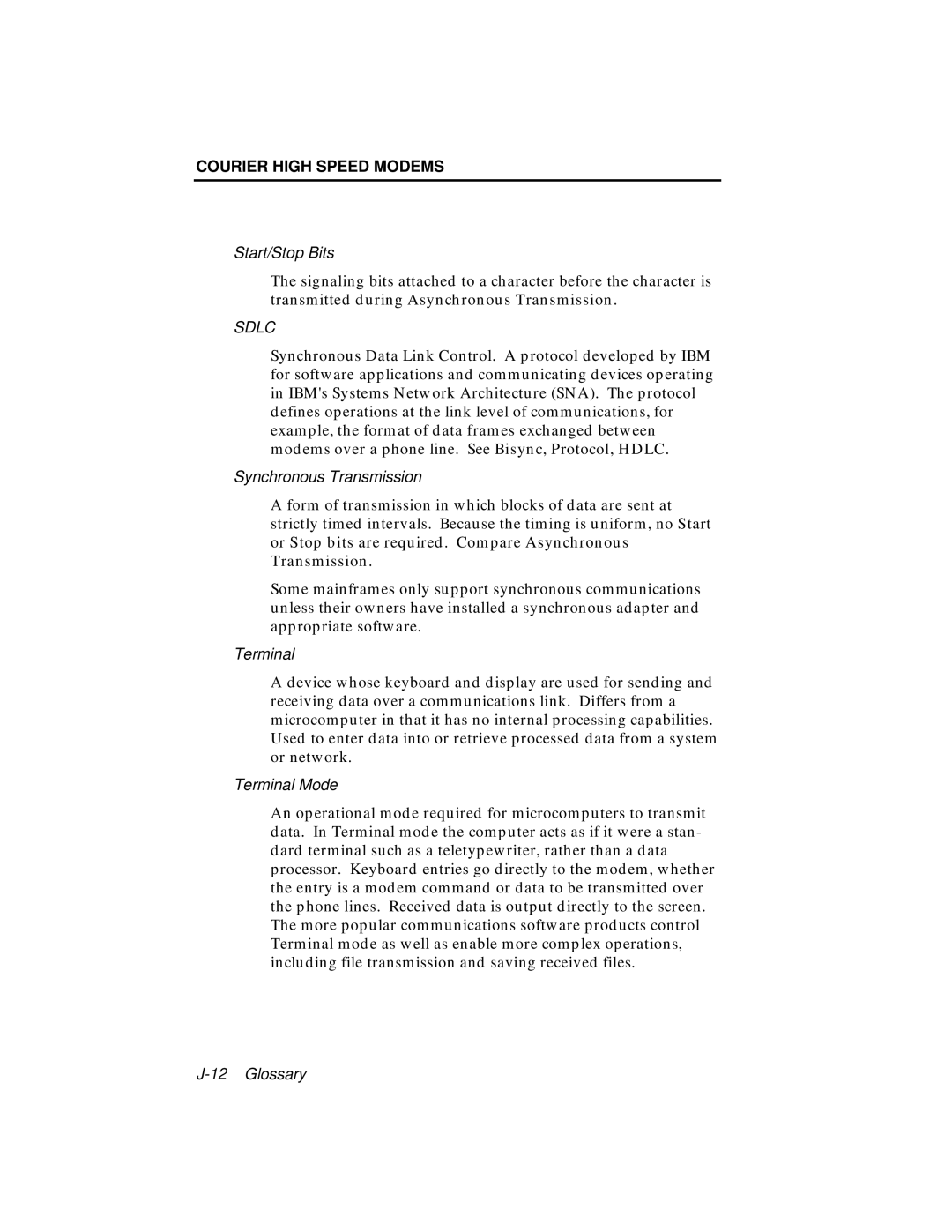COURIER HIGH SPEED MODEMS
Start/Stop Bits
The signaling bits attached to a character before the character is transmitted during Asynchronous Transmission.
SDLC
Synchronous Data Link Control. A protocol developed by IBM for software applications and communicating devices operating in IBM's Systems Network Architecture (SNA). The protocol defines operations at the link level of communications, for example, the format of data frames exchanged between modems over a phone line. See Bisync, Protocol, HDLC.
Synchronous Transmission
A form of transmission in which blocks of data are sent at strictly timed intervals. Because the timing is uniform, no Start or Stop bits are required. Compare Asynchronous Transmission.
Some mainframes only support synchronous communications unless their owners have installed a synchronous adapter and appropriate software.
Terminal
A device whose keyboard and display are used for sending and receiving data over a communications link. Differs from a microcomputer in that it has no internal processing capabilities. Used to enter data into or retrieve processed data from a system or network.
Terminal Mode
An operational mode required for microcomputers to transmit data. In Terminal mode the computer acts as if it were a stan- dard terminal such as a teletypewriter, rather than a data processor. Keyboard entries go directly to the modem, whether the entry is a modem command or data to be transmitted over the phone lines. Received data is output directly to the screen. The more popular communications software products control Terminal mode as well as enable more complex operations, including file transmission and saving received files.
